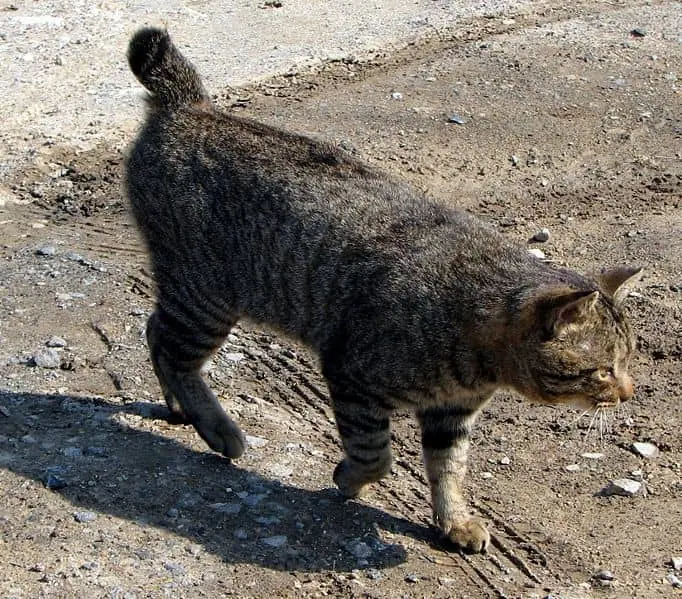Whether your cat was born with a “bobtail” or lost part of its tail in an accident, a short tail is a unique feature. This guide explains the common reasons why some cats have shorter-than-average tails and how to care for them.
What is the Average Length of a Cat’s Tail?
For most domestic cats, the average tail length is 9 to 11 inches. However, this varies by breed.
- Long tails: Breeds like the Maine Coon can have tails up to 16 inches long.
- Short tails: Some breeds, like the Manx, are naturally born with almost no tail at all.
4 Main Reasons Cats Have Short Tails
1. Genetics and Breeding
Most short-tailed cats are born that way due to a natural genetic mutation. For example, the Manx breed has a mutation in the TBX4 gene that prevents the tail from developing fully. Over time, breeders have selected for these traits to create specific “bobtail” breeds.
2. Injury or Trauma
Cats are active and sometimes get into accidents. A cat might have a short tail because:
- It was caught in a door.
- It was involved in a car accident.
- A veterinarian had to perform an amputation to treat a severe injury or infection.
3. Birth Defects (Congenital Abnormalities)
Some cats are born with “short tail syndrome” (also called brachyury). This is a developmental issue where the tail vertebrae don’t form correctly in the womb. This can happen randomly even in cats that aren’t specific bobtail breeds.
4. Surgical Docking
Tail docking is the surgical removal of the tail. While some people do this for “looks” or to meet certain breed standards, it is illegal or considered unethical in many countries. Most veterinarians discourage docking unless it is medically necessary for the cat’s health.
10 Cat Breeds Known for Short Tails
If you see a cat with a naturally short tail, it likely belongs to one of these breeds:
- Manx: Can be “rumpy” (no tail) or “stumpy” (short stub).
- American Bobtail: Has a tail about one-third the length of a normal cat’s tail.
- Japanese Bobtail: Features a short, fluffy tail that looks like a pom-pom.
- Cymric: Essentially a long-haired version of the Manx.
- Kurilian Bobtail: A wild-looking breed with a curved, short tail.
- Pixiebob: Bred to look like a wild bobcat, usually with a 2- to 6-inch tail.
- American Curl: Known for curled ears, they often have shorter, plumed tails.
- Scottish Fold: Famous for folded ears; some also have shorter, thicker tails.
- Serengeti: A lean, spotted cat that often has a shorter-than-average tail.
- Munchkin: Known for short legs, their tails are often shorter to stay in proportion with their bodies.
How to Care for a Short-Tailed Cat
Cats use their tails for balance and communication, so a short-tailed cat may need a little extra attention.
- Check Hygiene: Short-tailed cats (especially the Manx) can sometimes struggle to keep their rear area clean. Check regularly for dirt or irritation.
- Handle with Care: Never pull or tug on a short tail. The nerves at the base of the spine are very sensitive.
- Watch for Spine Issues: Some genetic mutations that cause short tails can also affect the spine (like spina bifida). Regular vet check-ups are important to ensure they aren’t in pain.
Frequently Asked Questions
Why is my cat’s tail crooked or kinked?
A “kinked” tail is usually caused by a minor genetic mutation or a small break that happened when the cat was a kitten. It is usually harmless but gives the tail a “bent” look.
Can a cat balance without a tail?
Yes. While the tail helps with balance, cats with short tails adapt quickly. They use their powerful hind legs to compensate for the lack of a “rudder.”


